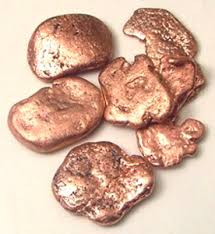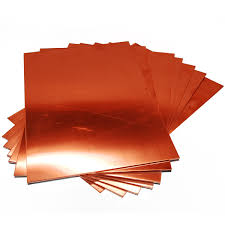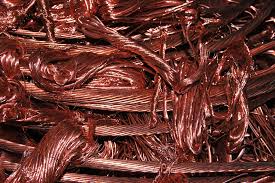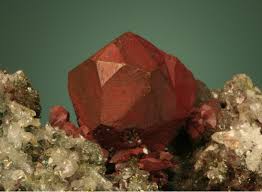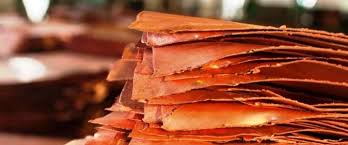Copper
Mohs hardness- 2.5 - 3
Harmonic connection between the physical and astral bodies while aligning the subtle bodies as well
Helps to free us from restrictions we have placed on ourselves
Stimulate optimism and diplomacy
Promotes independence and initiative
Energizes and motivating
Cleansing, purifing and healing
Attracts money
Good Luck
Can retreive items that were lost or stolen
Helps communication skills
Boosts self esteen
Amplifies thoughts and emotions to benefit
Cleanses wounds and fights antibaterial infections
Alleviate cramps
Promote smooth function of glands
Prevent damage of the joints
Assist with arthritis
Assist with rheumatic disease
Improve circulation of blood
Detoxification
Reduces inflammation
Stabilizes metabolism
Improves oxygen usage
Influences the blood and circulation of the body
Eases pain of sciatica
Copper
Copper is a metal mineral with a reddish coloring and a high electrical and thermal conductivity, which is nearly indispensable throughout history.
Copper is named after the Latin word “coprum”, which means from the Island of Cyprus. In ancient Rome, most copper was mined on the island Cyprus.
Copper is mined in the U.S, Chile, Peru, Mexico, Indonesia, Zambia, Democratic republic of Congo and Australia.
Many ancient civilizations have used the mineral Copper in various ways. The ancient Greeks, Egyptians, Romans and the Aztecs used it as a medicinal tool. An ancient Egyptian medical text, known as the Smith Papyrus (circa 2400 B.C.), mentions using copper as a sterilization agent for drinking water and wounds. Another ancient text, known as the Ebers papyrus (circa 1500 B.C.) mentions the use of copper for headaches, "trembling of the limbs," burns, and itching. In the first century A.D., the book De Materia Medica by Dioscorides, describes using verdigris (which they made by exposing metallic copper to vinegar steam to form copper acetate) in combination with copper sulfate as a remedy for bloodshot eyes, inflamed eyes, "fat in the eyes", and cataracts.
The island of Cyprus was most likely the main source of copper for Greece and Rome. Israel's Timna Valley was the source for the Egyptians.
Many Historically known men have noted the medicinal purposes of Copper. Hippocrates (circa 400 B.C.), known as the father of modern medicine mentions copper as a treatment for leg ulcers associated from varicose veins. Aulus Cornelius Celsus (14 to 37 A.D.), tells us that copper and its derivatives were firmly established as important drugs. In his book, De Medicina, Celsus details numerous uses for copper, along with specific instructions for the preparation of the particular form of copper recommended for each disease or condition. Pliny (23 to 79 A.D.) described a number of remedies involving copper.
The Greeks sprinkled a powder of copper oxide and copper sulfate on open wounds and treated wounds with a mixture of honey and red copper oxide.
The ancient Aztec civilization also used copper for medical purposes, including gargling with a copper mixture for sore throats. In ancient India and Persia, copper was used to treat lung diseases. Copper compounds such as malachite and copper oxide were used on boils and other skin conditions. Copper acetate and copper oxide were used for eye infections. Evidence also shows us that nomadic Mongolian tribes used copper sulfate, taken by mouth, to treat venereal ulcers.
The first recorded observation of copper's role in the immune system in modern times was published in 1867 when it was reported that, during the cholera epidemics in Paris of 1832, 1849 and 1852, copper workers were immune to cholera. In 1885, French physician used copper to treat arthritis. In 1939, Werner Hangarter, a German physician noticed that copper miners were unaffected by arthritis as long as they worked in the mines. This discovery lead to using copper for treatment of treat patients suffering from rheumatic fever, rheumatoid arthritis, neck and back problems, and sciatica.
Recent work with mice in the U.S. has shown that treatment of solid tumors with non-toxic doses of various organic complexes of copper markedly decreased tumor growth and metastasis and thus increased survival rate. These copper complexes did not kill cancer cells but caused them to revert to normal cells.
As modern researches continue to investigate the role of copper in the functioning of the human body, the efficacy of copper as a trace element critical to human health and wellness is slowly but surely being discovered . . . or, shall we say, rediscovered, since the incredible healing properties of copper have been understood and used throughout human history.
Generally accepted to be the first metal used by man, Copper has a long and rich history. Between 6,000 and 4,000 B.C, Copper has begun to be used. By 3,000 the occupants of the Nile Valley were using copper for tools, weapons and decorations. The malleable nature of copper made it an invaluable resource.The Sumerians and Chaldeans, ancient people of the Mesopotamian Valley, were the first to use copper. The earliest uses include tools for hunting such as copper arrows, quivers, harpoons and spearheads. Small objects such as cloak pins, rings, razors and chisels have been found from the time of prehistoric Sumeria, as were pots, mixing trays and ceremonial objects including saucers and jugs with silver handles. Sumerians were known for their skills in using for copper for sculpture. One of the most popular designs hammered into a copper sheet was that of a bull's head.
Borrowing and improving techniques picked up from the Sumerians, Egyptians created copper tools, some of which are still intact and functional. Ladles, strainers and tongs used in ancient Egypt are still serviceable; some knives and sickles are still sharp and copper pipes can still serve their function as plumbing. Egyptians originally used rocks as weights, but by 3,200 B.C., they began to utilize copper to create balances and weights used in trade and religious ceremonies. Egyptians molded copper into decorative weights such as animals. Crete used weights shaped like little axes. Assyria used lion weights marked with the names of kings. In ancient China, weights were also made in the shape of animals.
In addition to tools, weapons, ceremonial objects, and containers and utensils for cooking and dining, Egyptians also designed and created personal objects such as copper mirrors, razors and hair tweezers. The blue and green pigments used in eye make-up were made from powdered copper compounds. Copper sticks that ladies used to apply makeup are still functional today.
Copper was first used in China around 2500 BC. The Chinese quickly began using bronze as well, and used different percentages of tin in bronze for different purposes. They used copper and bronze extensively for coinage. During the flourishing economic activity and expanded foreign trade in the Sung dynasty, circa 900 to 1100 AD, the use of cash—round copper coins with a square hole in the middle—exploded. Copper production was now reaching almost industrial proportions in some civilizations, though probably nowhere more than in ancient Rome.
Although iron and lead were in use by the era of the ancient Romans, copper, bronze, and brass (an alloy of copper and zinc) were used by the Romans for coins, aspects of architecture such as doors, and some parts of their extensive plumbing system. Increased purity of Roman copper coins over time also shows that their smelting methods improved quickly.
It appears that during the first few thousand years of its use, humans experiment with and learned techniques to utilize copper. As they got better at working with it, civilizations became more complex, which in turn often enabled better copper-working technology. With this came expanded use of copper and a greater movement of copper into our everyday environment.
The Egyptians may have been the first group to discover that mixing copper with arsenic or tin made a stronger, harder metal better suited for weapons and tools and more easily cast in molds than pure copper. (Since copper ore often contains arsenic, this may have been the unintentional result of smelting copper ore that included naturally occurring arsenic.) This alloy of copper with arsenic or tin is called bronze, and there is archeological evidence that the Egyptians first produced bronze in 4,000 B.C. Bronze may have also been developed independently in other parts of the Middle East and other parts of the world. Regardless of where it originated, bronze metallurgy soon overtook copper in many parts of the globe, thus ushering in the Bronze Age. (In parts of the world that lacked deposits of tin, copper was used alone or alloyed with other metals until iron was introduced.)
Copper played a central role in the technologies developed during the industrial revolution. One of the most important uses of copper at that time was in electrical engineering. Early scientists experimenting with electricity chose copper as a transmitter because it is highly conductive (can transmit electrical current easily). The electrical engineering industry today is the second largest consumer of copper.
As copper helped humans to advance warfare, it also has played a role in the religious and spiritual life of people around the world through time. Hathor, Egyptian goddess of the sky, music, dance and art, was also the patron of Sinai, the major copper mining region of the Egyptians; she was often referred to as “Lady of Malachite.” In many pre-colonial sub-Saharan cultures as well, coppersmiths were believed to have powers as shamans, magicians, and priests because of their intimate knowledge of earth, minerals, and fire and their ability to produce metal from ore. In some parts of the continent coppersmithing was an inherited position with master smiths passing secret knowledge on to their sons. Mining, smelting, and casting of copper ore were preceded by elaborate ceremonies to ensure that the endeavors were safe and fruitful.
Copper is an essential nutrient to all plants and animals. In humans (and animals), it is actually found in the bloodstream. Concurrently though, in sufficient amounts, Copper can be poisonous and even fatal to many organisms.
Copper is considered a mineral of energy and mental agility. In legend, copper is said to be the metal of the God Hermes, who facilitates that mental agility, and quick wit.
As Copper is a conductor of heat and electricity, it is also considered a conductor of one’s spiritual energy, moving it back and forth between people, auras, crystals, and the spirit world. Said to be able to amplify one’s thoughts, sending and receiving psychic communication across long distances. Copper is cleansing, purifying and healing.
It can energize and motivate. It helps us to become more independent and take the initiative to create change. It can stimulate optimism and diplomacy. It helps us to free ourselves form restrictions that we have placed on ourselves. It helps open the world in a new way that can help you to find love or your true path,in a way that you wouldn't have conceived before.
Copper is said to provide a harmonic connection between the physical and astral bodies while aligning the subtle bodies as well.
Copper brings good luck and can help to retrieve items that were lost or stolen. It may help to attract money.
It can amplify your thoughts and emotions helping you to better understand yourself. This amplification helps to boost self esteem and communication skills. It is easier to communicate your wants and needs when you can clearly understand them.
Physically, Copper is said to help cleanse wounds as well as fighting bacterial infection. Copper is known to alleviate cramps. It can promote smooth function of glands. It may prevent damage of the joints, assist with arthritis and with rheumatic disease. It has been known to improve circulation of blood and detoxify the body. Copper reduces inflammation. It can stabilize metabolism and improve oxygen usage. It is known to stimulate the blood circulation and eases pain of sciatica.

